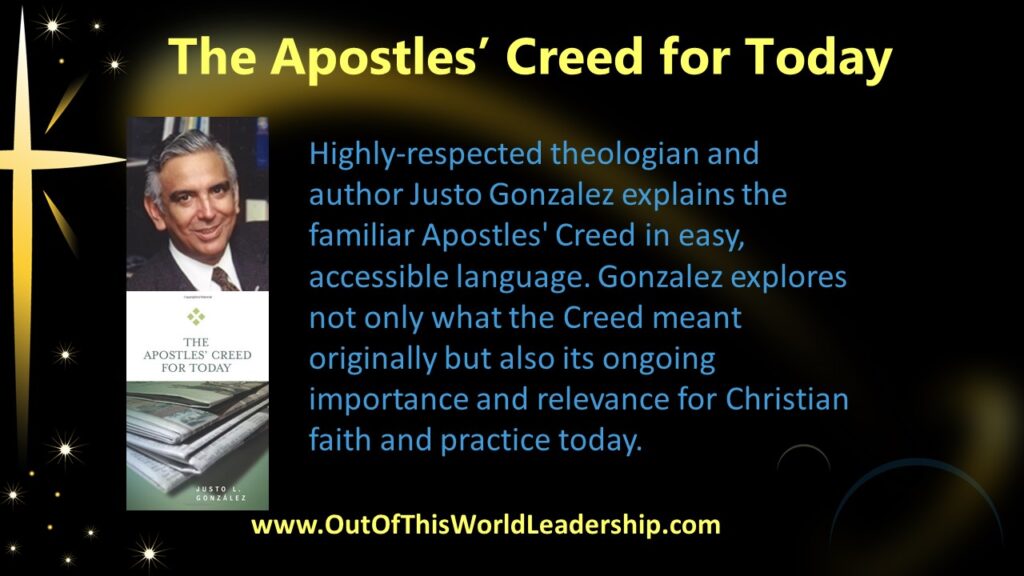
Throughout 2021, we’ve walked through The Apostles’ Creed. Earlier in the year, I read Justo Gonzalez’s The Apostles’ Creed for Today.
Gonzalez points out that according to a legend dating to the fourth century, as the twelve apostles prepared to leave Jerusalem and undertake their mission to various parts of the world, they conferred about the contents of their preaching, each contributing what he deemed best, and thus was the Apostles’ Creed formed. Each of the twelve, led by the Spirit, proposed a particular clause, as follows:
- Peter: “I believe in God the Father Almighty, Maker of heaven and earth.”
- Andrew: “And in Jesus Christ his only Son our Lord.” .
- James: “Who was conceived by the Holy Spirit, horn of the Virgin Mary.”
- John: “Was crucified, dead, and buried.”
- Thomas: “He descended to the dead. On the third day he rose again.”
- James: “He ascended into heaven, is seated at the right hand of the Father.”
- Philip: “And will come again to judge the living and the dead.”
- Bartholomew: “I believe in the Holy Spirit.”
- Matthew: “The holy catholic church, the communion of saints.”
- Simon: “The forgiveness of sins.”
- Thaddeus: “The resurrection of the flesh.”
- Matthias: “Life everlasting.”
It was not until the fifteenth century, just before the Protestant Reformation, that Western scholars began questioning the legends about the origins of the Creed. We now know that the origins of the Apostles’ Creed can he traced hack only as far as the middle of the second century, where a formula very similar to the Creed itself was used in Rome.
The structure of the Creed has evolved from the ancient baptismal formula “in the name of the Father, and the Son, and the Holy Spirit.” Thus, the Creed itself has three main parts, one referring to each of the three persons of the Trinity.
Click here for more about The Apostles’ Creed for Today
